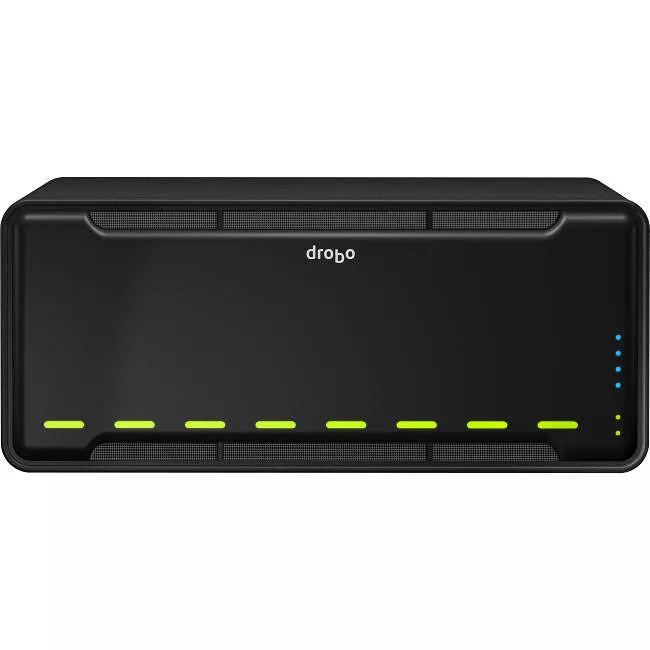Drobo DR-B810N-5A21 B810n 8-Bay NAS Array
SabrePC B2B Account Services
Save instantly and shop with assurance knowing that you have a dedicated account team a phone call or email away to help answer any of your questions with a B2B account.
- Business-Only Pricing
- Personalized Quotes
- Fast Delivery
- Products and Support

$1,443.93
Drobo DR-B810N-5A21 B810n 8-Bay NAS Array
The B810n is a fusion of large and fast. It can grow up to 64TB presenting itself as a single large pool of storage. If you add two SSDs, it accelerates access to commonly used hot data. Ideal for a network of up to 100 users, the Drobo B810n can store and share files. Use it as your primary storage for important files and documents OR as a place to backup files, projects, or even connect computers on the network.
The Problem B810n Solves
All other NAS systems have this problem: when multiple users are accessing it overall performance goes down. This is because simultaneous user requests induce the hard drives recording mechanism to move around the disk. The drive spends more time looking for data blocks than it does reading or writing data for users.
SSD Accelerated Performance
The B810n was designed to provide all users uniform performance. Add two SSDs and you can accelerate performance for all simultaneous users. New technology uses two techniques to accelerate access to your data:
-
Data Tiering: as transactional data (small pieces of data) is read or written it is placed in SSD storage. Subsequent reads or writes to these blocks are almost instantaneous as there is no delay induced by a hard drive's magnetic head having to move into position. Active, or hot data, is stored in an SSD tier of storage. As it cools, i.e. access decreases, the B810n will move the data to the hard drive tier.
-
Hot Data Cache: this is a technique to accelerate data reads. As data is read from hard drives, the B810n will prefetch nearby data that it predicts will be also be read. Your benefit is faster access and less waiting.
The B810n has dual Gigabit Ethernet ports. These can be bonded together to provide approximately twice the read/write performance you get via a single port. Or they can be used to provide a connection to two different subnets. Furthermore, they can be used in an active/passive mode so that if one port fails the other takes over.
Share Files With OS X, Windows, or Linux Users
Don't worry about compatibility - Drobo the B810n works with computers running OS X, Windows, or Linux operating systems. By default, the Drobo B810n uses the SMB file sharing protocol to talk to OS X or Windows. If you set up a share for Time Machine backup, it uses Apple's AFP protocol. Linux users pick which file sharing method to use on their system.
Drobo DR: Offsite Data Replication Built-in
The B810n has a feature called Drobo DR (DR = disaster recovery). You can set up a pair of B810ns to automatically make an offsite copy of your data. This provides an easy to setup offsite backup of your important data. Even better, the remote B810n stores all user account information so that recovery is a breeze.
Optimized for Time Machine
One or more Macs on a network can use the Drobo B810n for storing their Time Machine backups. Create a separate shares for use by Time Machine and assign them a maximum size. This lets users control how much space Time Machine uses, and stops it from taking over all storage on its backup target.

